LLMs and MLLMs
The past decade-plus has seen incredible progress in practical computer vision. Thanks to deep learning, computer vision is dramatically more robust and accessible, and has enabled compelling capabilities in thousands of applications, from automotive safety to healthcare. But today’s widely used deep learning techniques suffer from serious limitations. Often, they struggle when confronted with ambiguity (e.g., are those people fighting or dancing?) or with challenging imaging conditions (e.g., is that shadow in the fog a person or a shrub?). And, for many product developers, computer vision remains out of reach due to the cost and complexity of obtaining the necessary training data, or due to lack of necessary technical skills.
Recent advances in large language models (LLMs) and their variants such as vision language models (VLMs, which comprehend both images and text), hold the key to overcoming these challenges. VLMs are an example of multimodal large language models (MLLMs), which integrate multiple data modalities such as language, images, audio, and video to enable complex cross-modal understanding and generation tasks. MLLMs represent a significant evolution in AI by combining the capabilities of LLMs with multimodal processing to handle diverse inputs and outputs.
The purpose of this portal is to facilitate awareness of, and education regarding, the challenges and opportunities in using LLMs, VLMs, and other types of MLLMs in practical applications — especially applications involving edge AI and machine perception. The content that follows (which is updated regularly) discusses these topics. As a starting point, we encourage you to watch the recording of the symposium “Your Next Computer Vision Model Might be an LLM: Generative AI and the Move From Large Language Models to Vision Language Models“, sponsored by the Edge AI and Vision Alliance. A preview video of the symposium introduction by Jeff Bier, Founder of the Alliance, follows:
If there are topics related to LLMs, VLMs or other types of MLLMs that you’d like to learn about and don’t find covered below, please email us at [email protected] and we’ll consider adding content on these topics in the future.
View all LLM and MLLM Content

“Understand the Multimodal World with Minimal Supervision,” a Keynote Presentation from Yong Jae Lee
Yong Jae Lee, Associate Professor in the Department of Computer Sciences at the University of Wisconsin-Madison and CEO of GivernyAI, presents the “Learning to Understand Our Multimodal World with Minimal Supervision” tutorial at the May 2024 Embedded Vision Summit. The field of computer vision is undergoing another profound change. Recently, “generalist” models have emerged that

Snapdragon Powers the Future of AI in Smart Glasses. Here’s How
This blog post was originally published at Qualcomm’s website. It is reprinted here with the permission of Qualcomm. A Snapdragon Insider chats with Qualcomm Technologies’ Said Bakadir about the future of smart glasses and Qualcomm Technologies’ role in turning it into a critical AI tool Artificial intelligence (AI) is increasingly winding its way through our

Build VLM-powered Visual AI Agents Using NVIDIA NIM and NVIDIA VIA Microservices
This blog post was originally published at NVIDIA’s website. It is reprinted here with the permission of NVIDIA. Traditional video analytics applications and their development workflow are typically built on fixed-function, limited models that are designed to detect and identify only a select set of predefined objects. With generative AI, NVIDIA NIM microservices, and foundation

Quantization: Unlocking Scalability for Large Language Models
This blog post was originally published at Qualcomm’s website. It is reprinted here with the permission of Qualcomm Find out how LLM quantization solves the challenges of making AI work on device In the rapidly evolving world of artificial intelligence (AI), the growth of large language models (LLMs) has been nothing short of astounding. These
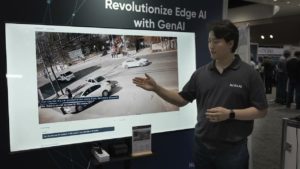
Nota AI Demonstration of Elevating Traffic Safety with Vision Language Models
Tae-Ho Kim, CTO and Co-founder of Nota AI, demonstrates the company’s latest edge AI and vision technologies and products at the 2024 Embedded Vision Summit. Specifically, Kim demonstrates his company’s Vision Language Model (VLM) solution, designed to elevate vehicle safety. Advanced models analyze and interpret visual data to prevent accidents and enhance driving experiences. The

Develop Generative AI-powered Visual AI Agents for the Edge
This blog post was originally published at NVIDIA’s website. It is reprinted here with the permission of NVIDIA. An exciting breakthrough in AI technology—Vision Language Models (VLMs)—offers a more dynamic and flexible method for video analysis. VLMs enable users to interact with image and video input using natural language, making the technology more accessible and

What’s Next in On-device Generative AI?
This blog post was originally published at Qualcomm’s website. It is reprinted here with the permission of Qualcomm. Upcoming generative AI trends and Qualcomm Technologies’ role in enabling the next wave of innovation on-device The generative artificial intelligence (AI) era has begun. Generative AI innovations continue at a rapid pace and are being woven into

Mission NIMpossible: Decoding the Microservices That Accelerate Generative AI
This blog post was originally published at NVIDIA’s website. It is reprinted here with the permission of NVIDIA. Run generative AI NVIDIA NIM microservices locally on NVIDIA RTX AI workstations and NVIDIA GeForce RTX systems. Editor’s note: This post is part of the AI Decoded series, which demystifies AI by making the technology more accessible
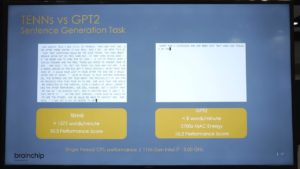
BrainChip Demonstration of the Power of Temporal Event-based Neural Networks (TENNs)
Todd Vierra, Vice President of Customer Engagement at BrainChip, demonstrates the company’s latest edge AI and vision technologies and products at the 2024 Embedded Vision Summit. Specifically, Vierra demonstrates the efficient processing of generative text using Temporal Event-based Neural Networks (TENNs) compared to ChatGPT. The TENN, an innovative, light-weight neural network architecture, combines convolution in
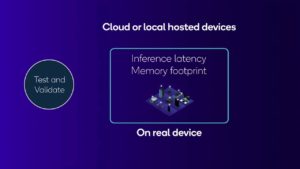
AI Developer Workflows, Simplified: Empowering Developers with the Qualcomm AI Hub
This blog post was originally published at Qualcomm’s website. It is reprinted here with the permission of Qualcomm. With over 100 pre-optimized AI and generative AI models, the Qualcomm AI Hub is a developer’s gateway to superior on-device AI performance Generative AI has been evolving to run on device, in addition to the cloud. It

AMD to Acquire Silo AI to Expand Enterprise AI Solutions Globally
Europe’s largest private AI lab to accelerate the development and deployment of AMD-powered AI models and software solutions Enhances open-source AI software capabilities for efficient training and inference on AMD compute platforms SANTA CLARA, Calif. — July 10, 2024 — AMD (NASDAQ: AMD) today announced the signing of a definitive agreement to acquire Silo AI,

Decoding How the Generative AI Revolution BeGAN
This blog post was originally published at NVIDIA’s website. It is reprinted here with the permission of NVIDIA. NVIDIA Research’s GauGAN demo set the scene for a new wave of generative AI apps supercharging creative workflows. Editor’s note: This post is part of the AI Decoded series, which demystifies AI by making the technology more
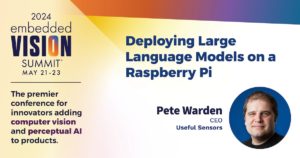
“Deploying Large Language Models on a Raspberry Pi,” a Presentation from Useful Sensors
Pete Warden, CEO of Useful Sensors, presents the “Deploying Large Language Models on a Raspberry Pi,” tutorial at the May 2024 Embedded Vision Summit. In this presentation, Warden outlines the key steps required to implement a large language model (LLM) on a Raspberry Pi. He begins by outlining the motivations for running LLMs on the

The Next Frontier in Education: How Generative AI and XR will Evolve the World of Learning in the Next Decade
This blog post was originally published at Qualcomm’s website. It is reprinted here with the permission of Qualcomm. (Ai)Daptive XR empowers students through real-time personalization and collaborative learning Envisioning the future of education, and the art of learning overall, is nothing new. Over 120 years ago, French artist Jean-Marc Côté suggested how learning may look
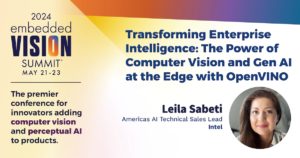
“Transforming Enterprise Intelligence: The Power of Computer Vision and Gen AI at the Edge with OpenVINO,” a Presentation from Intel
Leila Sabeti, Americas AI Technical Sales Lead at Intel, presents the “Transforming Enterprise Intelligence: The Power of Computer Vision and Gen AI at the Edge with OpenVINO” tutorial at the May 2024 Embedded Vision Summit. In this talk, Sabeti focuses on the transformative impact of AI at the edge, highlighting the role of the OpenVINO

Axelera AI Raises $68 Million Series B Funding to Accelerate Next-generation Artificial Intelligence
News Highlights: Powering Global Innovation: Mass adoption of Axelera AI’s Metis™ AI Processing Unit (AIPU), the world’s most powerful AIPU for edge devices, drives next-gen AI inference solutions for computer vision and generative AI. Accelerating Market Expansion: Europe’s largest, oversubscribed Series B funding in fabless semiconductors propels Axelera AI into new markets, including automotive and

